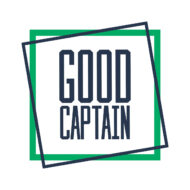Navigation has been a crucial skill for sailors throughout history. Before the advent of modern technology, sailors relied on various techniques to navigate the vast oceans and reach their destinations safely. One such technique, known as dead reckoning, played a vital role in maritime navigation. This article explores the concept of dead reckoning, its principles, and its significance in sailing navigation.
Understanding Dead Reckoning:
Dead reckoning, also known as deduced reckoning or DR navigation, is a method used to estimate a ship’s current position based on a previously known position, course, and speed. It involves continuously updating the ship’s position by considering the distance traveled and direction steered since the last known position.
Principles of Dead Reckoning:
Dead reckoning relies on three essential elements: the ship’s course, speed, and time. By maintaining a constant heading and speed, sailors can estimate their position relative to the last known fix. The key principles of dead reckoning include:
- Course: The direction in which the ship is steered, expressed as a compass bearing or true bearing. It is crucial to maintain a steady course to ensure accurate dead reckoning.
- Speed: The rate at which the ship is moving through the water, measured in knots. Speed is determined using various instruments, such as a ship’s log, which records the distance traveled over a specific period.
- Time: The duration between the last known fix and the present moment. Accurate timekeeping is essential for dead reckoning calculations.
Dead Reckoning Calculations:
Dead reckoning involves a series of calculations to estimate the ship’s position. The process includes:
- Distance Traveled: By multiplying the ship’s speed by the time elapsed, sailors can determine the distance covered since the last known fix.
- Direction: Using the ship’s course and taking into account any changes due to currents or wind, sailors can determine the vessel’s heading relative to true north.
- Plotting the Position: Starting from the last known fix, sailors plot the distance traveled and the direction on a navigational chart, allowing them to estimate their current position.
Limitations and Challenges:
Dead reckoning is a valuable technique, but it has inherent limitations and challenges:
- Errors Accumulation: Small errors in course, speed, or time measurement can accumulate over time, leading to significant deviations from the actual position.
- Environmental Factors: Factors like winds, currents, and tides can impact the ship’s course and speed, introducing additional complexities to dead reckoning calculations.
- Lack of Reference Points: Dead reckoning relies solely on the ship’s previous position, making it challenging in areas with limited visual reference points or during periods of poor visibility.
Navigational Aids and Modern Techniques:
In modern times, sailors have access to advanced navigational aids and technologies, such as GPS (Global Positioning System), radar, and electronic charting systems. These technologies have significantly enhanced navigation accuracy and reduced reliance on dead reckoning alone. However, dead reckoning remains an essential skill for mariners, serving as a backup method when electronic systems fail or as a means to cross-verify positions.
Dead reckoning is an ancient technique that has played a vital role in maritime navigation for centuries. By using course, speed, and time, sailors can estimate their position relative to a known fix. While advancements in technology have revolutionized navigation, understanding dead reckoning remains crucial for mariners, ensuring they possess the skills and knowledge to navigate the seas safely and confidently, even in the event of technical failures or challenging conditions.
